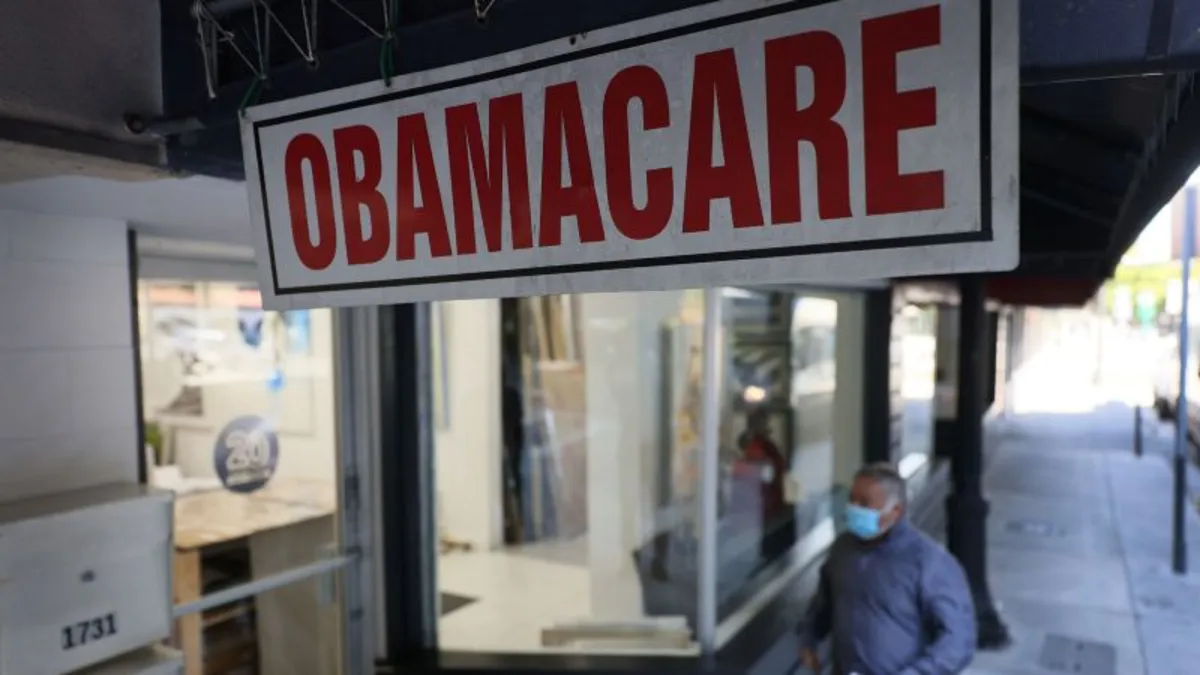
According to a recent analysis by the Kaiser Family Foundation (KFF), premiums for Affordable Care Act (ACA) coverage are set to rise dramatically by an average of 26% next year. This alarming increase comes just days before the open enrollment period begins on November 1. It marks one of the largest jumps in premiums since the inception of Obamacare over a decade ago, and it does not account for the upcoming expiration of enhanced premium subsidies.
Consumers located in the 30 states utilizing the federal exchange, healthcare.gov, can now preview their potential costs for 2026 coverage, as the site has opened for "window shopping." The KFF analysis indicates that the monthly premium for the benchmark plan on healthcare.gov will rise by an average of 30%. In contrast, states that operate their own exchanges will see benchmark plan premiums increase by an average of 17%.
However, the situation is graver when considering the expiration of enhanced premium subsidies. A separate KFF analysis reveals that enrollees could experience monthly payments that more than double due to these subsidies disappearing. Many consumers visiting healthcare.gov for the first time will soon experience significant sticker shock as they view their potential premium costs.
Despite the substantial premium increases, most enrollees will still have options available on the federal exchange with premiums at or below $50 per month, thanks to the original subsidies established under the ACA in 2010. According to a fact sheet released by the Centers for Medicare and Medicaid Services (CMS), nearly 60% of enrollees shopping for 2026 coverage can find plans within this price range. This is a notable decline from 83% of consumers who were able to find affordable plans in 2025.
The Biden administration has frequently noted that four out of five enrollees on the federal exchange could secure plans for $10 or less in previous years. However, the CMS fact sheet did not mention the anticipated increase in insurers' premium rates, which is a critical aspect of the upcoming enrollment period.
The expiration of these enhanced subsidies has become a contentious issue on Capitol Hill, particularly amidst ongoing negotiations to fund the federal government and resolve the shutdown that began on October 1. Democrats are advocating for a short-term funding package that includes an extension of these enhanced subsidies, while Republicans maintain they will not engage in negotiations until the government reopens. Extending the subsidies is projected to cost around $350 billion over the next decade, according to the Congressional Budget Office.
Democrats and advocates for the ACA warn that the damage will be evident well before the subsidies officially expire at the end of the year. If consumers face significantly higher premiums, they may choose not to enroll in coverage, even if lawmakers later decide to renew the subsidies.
Several states that manage their own ACA exchanges have reported that premiums will at least double next year if the enhanced subsidies are not renewed. For instance, in New Jersey, premiums are expected to exceed $2,780 annually, representing an average increase of more than 174%. This surge is attributed to both the expiration of enhanced subsidies and an average insurer rate hike of 16.6%, according to the state's Department of Banking and Insurance.
In Colorado, enrollees in the Connect for Health exchange will see an average premium increase of 101% next year, as announced by the state’s Division of Insurance. Approximately 75,000 residents in Colorado will lose their health coverage due to the lapse of enhanced subsidies.
The enhanced subsidies, approved by a Democratic Congress in 2021 and extended the following year, contributed to a record enrollment of 24 million people for this year. Around 17 million individuals signed up for coverage through healthcare.gov, while another 7 million reside in states with their own exchanges. The end of these subsidies could significantly affect many individuals, including those in states with the highest enrollment increases.
These more generous subsidies have allowed lower-income Americans to obtain coverage with minimal or no monthly premiums, while also broadening eligibility for assistance among middle-class consumers. However, the availability of enhanced aid has also led to instances of fraud, primarily involving brokers and agents seeking commissions by misleading consumers about their coverage options.
If the enhanced subsidies lapse, a substantial number of consumers are expected to exit the exchanges. According to a Congressional Budget Office analysis, around 4 million additional individuals could be uninsured by 2034, compounding the existing issue of approximately 10 million people lacking coverage due to prior legislative changes impacting ACA and Medicaid provisions.
This article will continue to be updated with additional information as the situation develops.